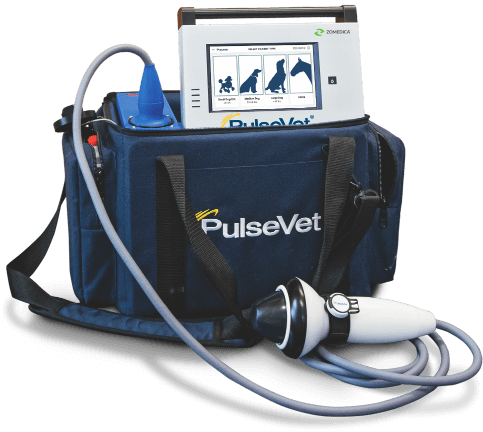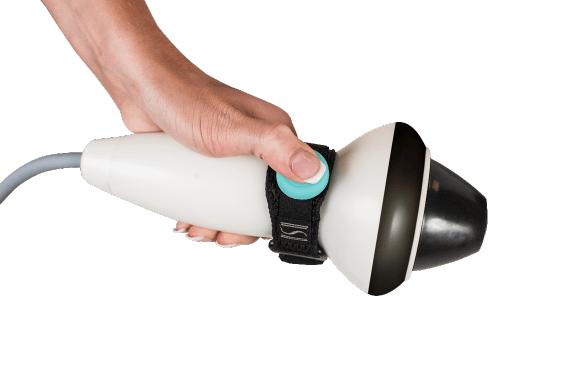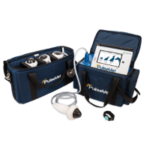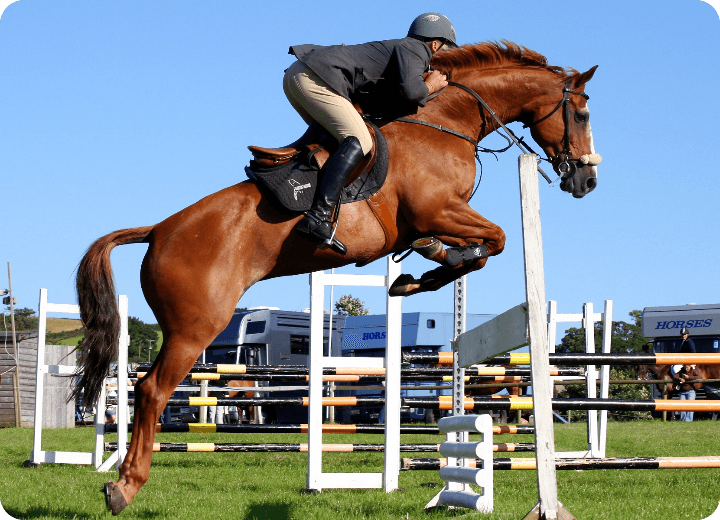PulseVet Shock Wave therapy for horses
Find local veterinarians
who offer PulseVet therapy
Type To Search
What can PulseVet Shock Wave treat in horses?
Tendon & Ligament Injuries
Soft tissue injuries including strains and tears of flexor tendons, suspensory and check ligaments, bowed tendons, and muscle strains are common in horses. These types of injuries can take a long time to heal with months of rehabilitation, limited exercise, and high rate of reinjury.
PulseVet therapy offers a viable recovery option, requiring only three treatments spaced 2-3 weeks apart.
- Improves speed of healing and quality of tissue repair
- Reduces inflammation, decreasing lameness and pain
Bone Fractures
Riding, racing, and jumping put stress on a horse’s bones and increase the risk of fractures, including splints and buck shins. PulseVet therapy accelerates cellular bone production at the injury site for faster and more complete bone healing.
- Stimulating proteins increase cellular bone production for faster bone healing
- Reduces inflammation, decreasing lameness and pain
- Improves patient outcomes and recovery
Osteoarthritis/Joint Disease
- Manages chronic pain
- Resolves lameness for 6-12 months on average – after just 1-2 treatments
- Reduces need for daily dosed medications
Foot Injuries
- Improves speed of healing
- Improves quality of tissue repair
- Reduces inflammation, decreasing lameness and pain
Wounds
- Limits likelihood of wound becoming chronic
- Promotes antibacterial effects to help fight infection1
- Provides sufficient pain relief
Back Pain/Kissing Spines
- Reduces inflammation, decreasing lameness and pain for 6-12 months on average – after just 1-2 treatments
- Improves mobility
- Reduces need for daily dosed medications

What to expect
Frequently Asked Questions
Referred to as “shock wave” for more than a decade now, the PulseVet technology uses high-energy sound waves – called pulses or shock waves – to stimulate and speed the body’s own healing process. These sound waves release higher energy and result in deeper penetration than an ultrasound or laser. The waves travel through soft tissue at different depths to a specific treatment area and begin healing.
The high-energy sound waves stimulate cells and release healing growth factors in the body that reduce inflammation and swelling, increase blood flow, and help bones and wounds heal.
It takes time for the biological responses in the body to take effect and begin healing. Your horse should not take part in any strenuous or high-impact activity during this period, even if it appears it is feeling better. The healing is not complete, so give your horse some rest. Many times 1 treatment is sufficient for long-term healing. However, your vet may recommend a second or third treatment a few weeks apart, depending on the indication.
Shock wave healing is an affordable alternative to surgery, as well as long-term use of anti-inflammatory pharmaceuticals. It requires significantly fewer treatments than other modalities. One treatment ranges from $250-350, which may or may not include sedation and other tests/exams the veterinarian performs for effectively diagnosing the injury before treatment.
C. Bileddo, Horse Owner in Illinois







